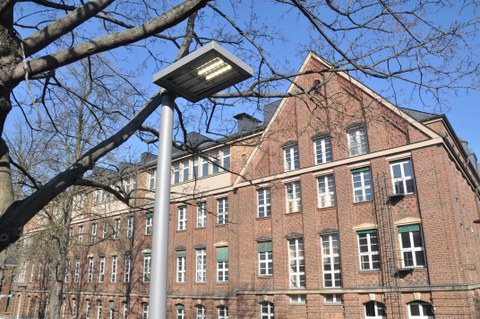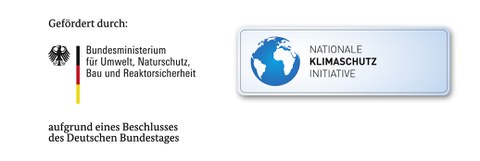Jun 10, 2016
New outdoor lighting on campus
Since autumn 2015 new trenches, masts and foundations were built on the central Campus between Berg-, Mommsen- and Helmholtzstraße. The external lighting installations were renewed - a step that was urgently needed. The construction is financed by the Federal Ministry for the Environment, Nature Conservation, Building and Nuclear Safety through the project execution organisation Jülich. The aim is to provide a continuous lighting that can be controlled centrally and is on the cutting edge of technology.
Currently there are "historical" lights from early and late GDR times and various sporadic renewed light sources, some of which are located right next to the modern lamp poles. Many old lights are broken or are still working but are technically outdated and have a high energy consumption. Thanks to efficient LED technology, the TU Dresden is now able to save up to 60 percent of energy for lighting in the modernized areas. In the current phase of construction a total of 96 new lights are installed.
The campus is going to get a homogeneous appearance. The new lighting columns and wall lights with a modern outlook do not dominate the space and step back behind the architecture of the buildings. The roads are illuminated with high efficiency and a special night mode promises additional potentials to save energy.
At distinctive sites, such as the square in front of the Hörsaalzentrum, light tubes are planned, which radiate light through light-guiding optics effectively. The floodlight poles along the roads are equipped with LED lighting modules, each 42 watts strong and walkway lights with lamps of 12 watts. In the old lamps sodium bulbs with 70, 150 watts (or more) and lower efficiency were used. In the future, each lamp can be monitored and controlled from a central location using an intelligent control technology.
The first construction phase in the Georg-Schumann-Str. 7 has already been completed. The completion of the new outdoor lighting in the central Campus area is planned for the end of April 2016.


